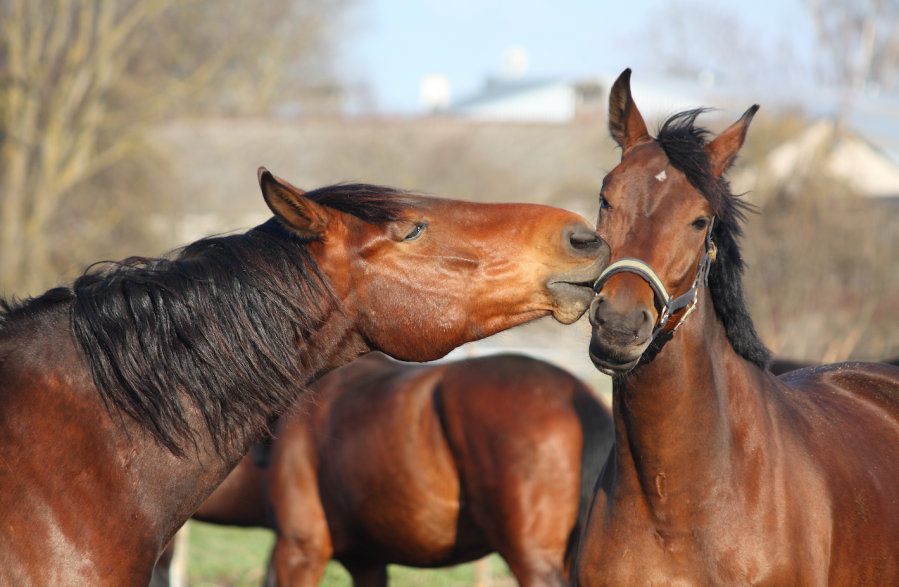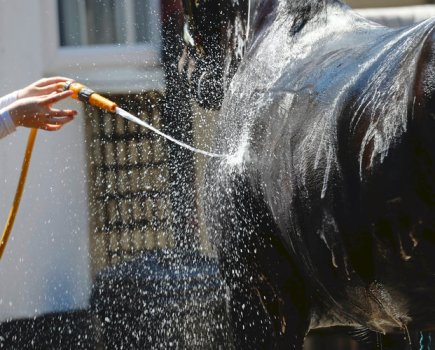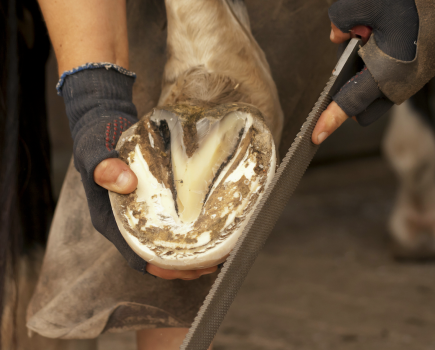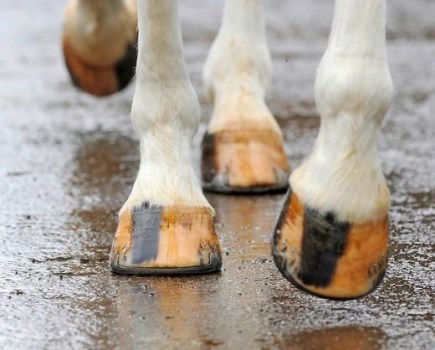When it comes to communication, horses have a subtle yet very effective way of communicating with each other — and us, their human friends. They can’t talk of course, and so it’s our job as good owners to identify the language they are speaking by learning to read and understand their behaviour.
Only by learning our horse’s language can we begin to understand them. They tell us a lot every day, but many of us need to improve our listening skills by learning what to look and listen out for.
Here are six things you need to know about how your horse communicates with you:
1 Horse communication is subtle
While it is one of the horse’s best ways of communicating with us, a horse’s body language can be very subtle and is often missed by humans.
One reason for their subtlety is that horses are naturally stoic, as they wouldn’t have wanted to draw attention to themselves in the wild by being loud or overtly displaying illness that could attract predators. Prey animals that appear sick or injured are particularly vulnerable to attack; essentially, they are easy targets.
We can also train our horses to look calm and collected, even when they are not. For example, police horses are taught to stand and not move when a rioting crowd comes towards them. While they may look as though they are holding it together, their heart rate is high, indicating that they are stressed.
2 Important signs to pay attention to
If a horse is uncomfortable, they will show subtle signs that are enough to get a reaction from other horses, but this line of communication can be missed by humans.
These include:
- Tail swishing
- Moving their ears (both flat back, for eg)
- Shaking their body
- Having a triangular eye
- Tense muzzle
- Open mouth
- Blinking
If we miss these signs, then the horse’s communication will become ‘louder’. These behaviours can include:
- Bucking
- Biting
- Kicking
- Striking out with a front leg
- Bolting
- Rearing
- Napping
None of these are pleasant to experience as a horse owner/rider. Rather than dismissing them as ‘naughty’ or ‘bad’ behaviours, we need to stop and consider what is causing the horse to act in this way — especially when it is out of character.
You need to know your horse
The better you know your horse, the easier, I think, it becomes to understand their channels of communication because you get to know their character, what they do and don’t like, and what is ‘normal’ behaviour for them.
I remember being out hacking with my sister and Dad, all of us on ex-racehorses. Dad was in front on Arnie, when out of nowhere the 17.2hh bay gelding leapt into the air and did a massive buck. We laughed, and carried on, thinking something had spooked him in the hedge.
Maybe a minute later, if that, Arnie did it again. This time, realising that something was wrong, my sister got off her horse and went to look at him.
She found a leaf caught in his sheath area and pulled it out. Nothing else seemed amiss, so she remounted and we carried on. Arnie didn’t buck again, so she must have solved the problem.
Had we missed signs of discomfort before that? Looking back I don’t think so. We owned Arnie for over 10 years and knew him well. So when he bucked so abruptly — Arnie did buck from time to time out of excitement, but this scenario was unusual — we knew he was trying to tell us something.
3 Facial expressions
A horse’s facial expression is a key part of communication and it can reveal more than you might think about how they are feeling. It’s not just a case of looking at their ear positions, but their whole face.
The Horse Grimace Scale is a pain assessment tool which identifies six facial expressions of a horse and scores them on a scale of 0 (not present), 1 (moderately present) and 2 (obviously present).
The actions are:
Stiffly backwards ears
The horse’s ears are held stiffly and turned backwards causing the space between the ears to appear wider at the top compared to the base line.
Orbital tightening
The horse’s eyelid is partially or completely closed. Any closure that reduces eye size by more than half is coded 2 (obviously present).
Tension above the eye area
Contractions of the muscles in the area above the eye causes underlying bone surfaces to appear more prominent.
Prominent strained chewing muscles
This is increased tension above the mouth.
Mouth strained and pronounced chin
A strained mouth is clearly visible when the upper lip is drawn back and the chin appears more pronounced.
Strained nostrils and flattening of the muzzle’s profile
The horse’s nostrils look strained and slightly dilated, and the profile of the nose flattens with elongated lips.
4 Watch out for learned helplessness
Some negative behaviours that horses show are labelled as naughty ones, and instead of working out what is causing it, we punish the behaviour.
In the end, the horse gives up and does what is asked because it is better than being punished. When this happens, they have to continue working through their discomfort or confusion and the only way to deal with that is to shut down, also known as ‘learned helplessness’.
A horse with this condition may have a sad demeanour or be non-responsive. They may present with a lowered head, little interest in their surroundings and it looks like they have given up.
5 Your horse may ‘talk’ to you
Horses aren’t hugely vocal animals, but they can use their voices for communication when they need to. A loud neigh may be used when your horse is on their own and trying to locate their friends.
If they whinny as you pull into the yard, they might have learnt what your car sounds like and are trying to work out where you are.
Your horse might whicker at you as a greeting in anticipation of what you may offer in way of care and food. If they squeal, it is usually social excitement, whilst a nicker is used to attract the attention of other horses.
Snorting, particularly if short, can be a sign of fear or excitement. This is different to a nose blow, which is when they clear their nose.
6 Learn their language
Learning your horse’s body language is key to understanding what they are trying to communicate with you. Negative behaviour doesn’t mean that the horse is being naughty and pain should always be ruled out first.
Other reasons could be that they are depressed, or don’t understand what you are asking them to do.
If in doubt, seeking the advice of a behaviour consultant can be a good start to understanding horse communication and what they are trying to tell you. As you practise, you will find it easier to pick up on the subtle signs they are making to show you how they’re feeling.
Main image © Shutterstock









